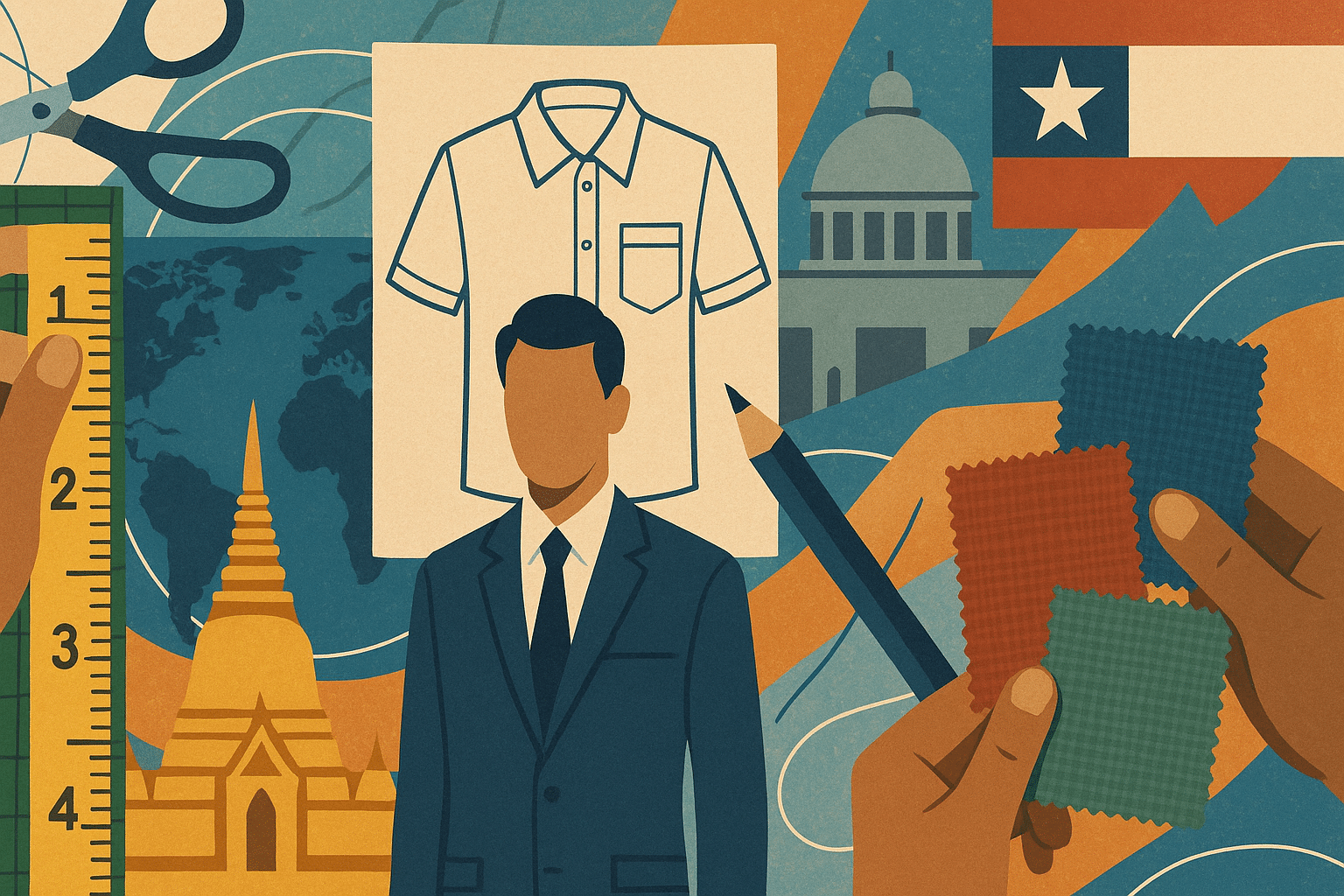One of my favorite things about working in uniforms is how much they quietly say without ever opening their mouths. A uniform can shout discipline or call for respect. It can reflect pride, purpose, even climate. And if you look closely enough, you can always spot the story of the place where it comes from, woven right into the fabric.
Designing for a single company is one thing. Designing a national uniform program? Whole different ball game. You are not just picking colors and designs, you are negotiating with geography, culture, tradition, and industry needs. It is global problem-solving with tape measures and fabric swatches.
Take North America. The sheer size and climate variation alone would keep any designer on their toes. A delivery driver in Arizona needs something different from a field worker in British Columbia. Moisture-wicking, lightweight fabrics rule the South, while thermal layers and rugged ripstops dominate the North. And don’t forget function (my favorite subject), pockets, reinforcement and safety features.
Move south to Latin America, and it is all about staying cool. The fabrics get lighter, the colors bolder. There is a flair for uniforms here that is hard to miss, especially in schools and civic programs. Workwear must breathe and be flexible. In industries like agriculture and oil, you will see global standards, but adjusted: ventilation, movement, and color for added safety.
Europe, of course, brings legacy. The uniforms here have history, sometimes hundreds of years’ worth. A London police officer’s hat or a French gendarme’s kepi isn’t just for show; it is a nod to a national identity. That said, the continent also does not compromise on looks. In places like Italy and Germany, you will find uniforms that manage to be both sharply tailored and utilitarian. Only in Europe could a traffic warden look like they just walked off a runway.
The Middle East presents a masterclass in balancing cultural and environmental needs. Uniforms here flow and breathe, echoing traditional dress while ensuring comfort under an unrelenting sun. And in military and security spaces, design often leans toward desert tones, sun shielding, and breathability with performance never taking a back seat.
Asia might be the most complex canvas. In East Asia, uniforms are often about precision and unity, especially in schools and corporate environments. Japan’s sailor-style school uniforms are iconic, while workwear tends to be smart, branded, and heavily customized. In South Asia, heat and heritage collide with lightweight fabrics and traditional silhouettes, with schools and government uniforms often splashed in rich, culturally significant colors. And in Southeast Asia, you’ll see a fascinating fusion: modern cuts meet tropical comfort, influenced by both local culture and colonial echoes.
Africa’s uniforms stand out with boldness and adaptability. Whether it is a traffic officer in bright, symbolic clothing or school kids in outfits featuring regional patterns, there’s pride stitched into every seam. The designs here often combine traditional aesthetics with practical adjustments for sun, movement, and durability especially across the continent’s varied climates and terrains.
What ties all these regional styles together? Climate, culture, history, and industry. But deeper than that, it is the purpose. Uniforms work. They protect, identify, and unify. But more than anything, they speak. And when we listen, we get a glimpse into what makes each corner of the world tick.




















